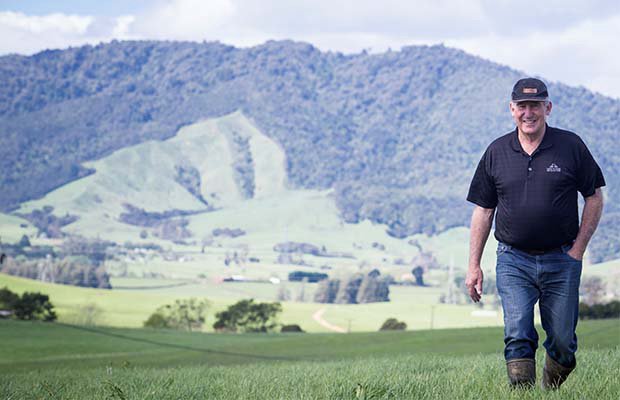Waikato and South Auckland farmers are being told to plan for a possible drought as an extended spell of dry weather continues into autumn.
In general rainfall has been low and fallen a lot less regularly than normal, apart from a few isolated downpours, Waikato Primary Industries Adverse Event Cluster chair and Ohinewai farmer Neil Bateup said.
“We have been monitoring the climatic situation closely and meeting regularly, as we do every summer. The La Niña setup contributed to a few ex tropical cyclones passing near New Zealand, but most have not provided any relief to Waikato and South Auckland,” Bateup said.
WeatherWatch senior forecaster Phil Duncan said there was a chance in May of rainmakers from the north, but long-range data from RuralWeather/IBM suggests more normal rainfall may return in winter.
“So yes, Waikato is leaning drier than average for the rest of autumn, but the silver lining is that while most days will be dry, we do have that ‘wild card’ effect with La Niña in play. In other words, many dry days do still have some chance of being balanced by a one of sub-tropical rain event,” Duncan said.
NIWA Meteorologist Ben Noll said there was potential for rain in the second week of May, but the overarching theme is to expect longer periods of dryness than is typical for the time of year.
Waikato Federated Farmers dairy chairm Andrew Reymer said farmers were using up supplementary feed reserves that normally they would have held until July and August-September.
“It’s getting pretty dire,” Reymer said.
“The problem is not now, it’s later on. We have feed, there’s no cows going hungry, but what are we going to do in August-September if it’s a really tough winter.”
Farmers were now hoping the winter will be mild enough to allow grass covers to recover and reduce the likelihood of a feed shortage.
“If it’s a stunning, mild winter, we’ll be fine, but that’s the unknown. It’s ridiculously dry – it’s green but nothing’s growing. Growth rates are absolutely abysmal for this time of the year.”
Farmers usually have built up a good cover of grass as growth rates slow down heading into winter. This had not happened this year, with most farmers on a bare minimum of cover.
Most of the region’s spring calving herds have dried off and farmers are concentrating on maintaining cow condition as well as they can with calving two months away.
For the autumn calvers, it was coming into peak milking and would be feeding out large quantities of supplement, he said.
Bateup said farmers should maintain feed budgets, plan for disruptions and communicate regularly with stock agents and other rural professions.
Farmers also needed to think about derisking the business and ways to make it more resilient, such as carrying lower stocking rates over winter and regularly forward planning feed supplies.
Farm owners and sharemilkers need to discuss their circumstances, be flexible in their farm systems, and make early decisions to avoid long term consequences.
“Rural communities also need to remain vigilant with covid-19 still spreading across our communities, further bumps and arrivals of new strains and winter flus all possible over the next six months,” Bateup said.
“So far, most farming families and their businesses have managed to cope with self-isolation with the Omicron spread across our communities.”
It remains important to think of and talk to family members and neighbours about how to continue running the farm in case the farm owner or their staff test positive and are one of the few unable to cope.
He urged farmers to make contact with organisations such as the Rural Support Trust, which he chairs, if they need to.
“We can tailor support to suit your needs and listen to any concerns you may have. We can also help navigate challenges and utilise the network across agencies where needed,” he said.










